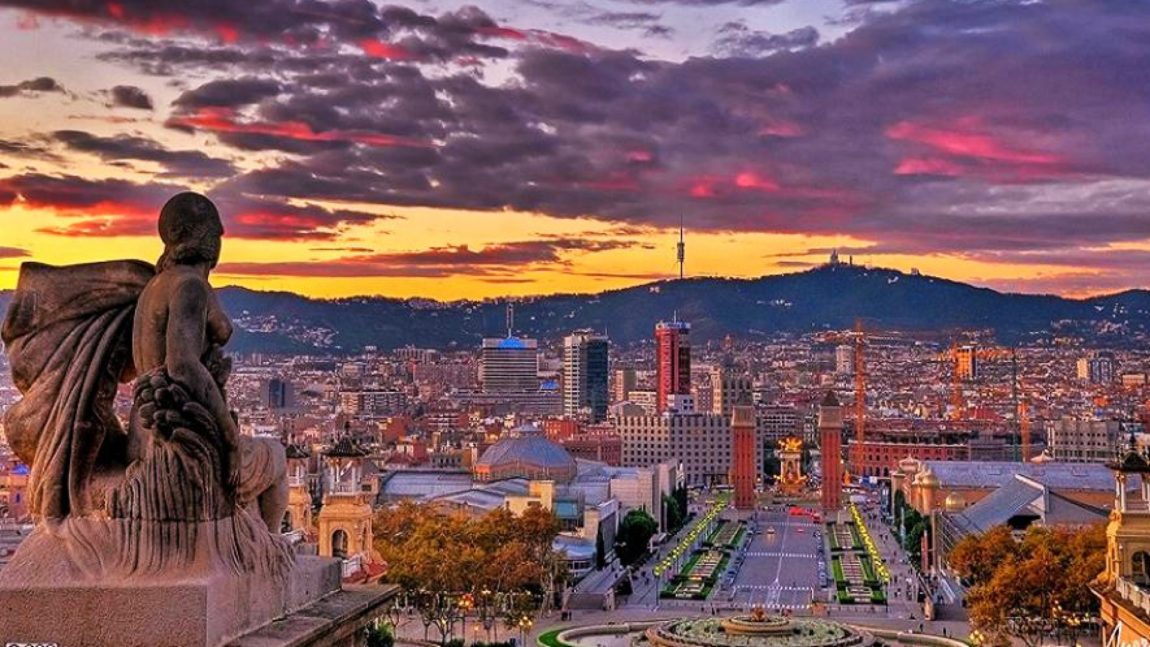Barcelona offers great variety of sightseeing and entertainment, making it the most visited city in Spain. One of the Mediterranean’s busiest ports, is more than the capital of Catalonia. In culture, commerce and sport it not only rivals Madrid, but also considers itself on a par with the greatest European cities. The success of the 1992 Olympic Games, staged in the Parc de Montjuïc, confirmed this to the world. Although there are plenty of historical monuments in the Old Town, Barcelona is best known for the scores of buildings in the Eixample left by the artistic explosion of Modernisme in the decades around 1900. Always open to outside influences because of its location on the coast, not too far from the French border, Barcelona continues to sizzle with creativity: its bars and the public parks speak more of bold contemporary design than of tradition.
Gaudí and Modernisme
Towards end of 19th century new form of art and architecture, Modernisme, a variant of Art Nouveau, was born in Barcelona. It became a means of expression for Catalan nationalism and counted Josep Puig i Cadafalch, Lluís Domènech i Montaner and, above all, Antoni Gaudí i Cornet among its major exponents. Barcelona’s Eixample district is full of the highly original buildings that they created for their wealthy clients. To read more about Gaudi’s Barcelona>Click Here!

Park Guell
City’s Layout

Barcelona-map
OLD TOWN

Gothic-Quarter
The Old Town, traversed by the city’s most famous avenue, Las Ramblas, is one of the most extensive medieval city centers in Europe, containing mixture of old and new architecture. The Barri Gòtic (true old center of the Old Town), contains the cathedral and a maze of streets and squares. Across from the Via Laietana, the El Born neighborhood is dominated by the Santa Maria del Mar church and is replete with 14th-century mansions. This area is bounded by the leafy Parc de la Ciutadella, home to the city’s zoo. The revitalized seafront is a stimulating mix of old and new. Trendy shops and restaurants make up the fashionable marina, contrasted within the old maritime neighborhood of Barceloneta and the modern Olympic port.
Las Ramblas
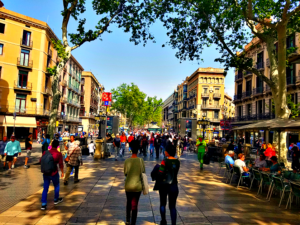
Las-Ramblas
The historic avenue of Las Ramblas (Les Rambles in Catalan) is busy around the clock, especially in the evenings and at weekends. Newsstands, caged bird and flower stalls, tarot readers, musicians and mime artists throng the wide, tree shaded central walkway. Among its famous buildings are the Liceu Opera House, the huge Boqueria food market and some grand mansions. It is a favorite of tourists and pickpockets alike, so watch your belongings.
EIXAMPLE
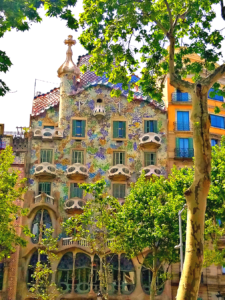
Casa Battló
Barcelona claims to have the greatest collection of Art Nouveau buildings of any city in Europe. The style, known in Catalonia as Modernisme, flourished after 1854, when it was decided to pull down the medieval walls and to allow the city to develop into what had previously been a construction-free military zone. The wealth of Barcelona’s commercial elite, and their passion for all things new, allowed them to give free rein to the age’s most innovative architects in designing their residences as well as public buildings, with crown jewel being Antoni Gaudí’s Sagrada Familia. For more on exploring Gaudi’s Barcelona see my separate article (Click Here).
MONTJUÏC
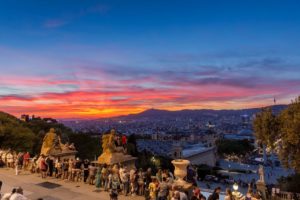
sunset-montjuic
The hill of Montjuïc, rising to 213 m (699 ft) above the commercial port on the south side of the city, is Barcelona’s biggest recreation area. Its museums, art galleries, gardens and nightclubs make it a popular place in the evenings as well as during the day. The Poble Espanyol is a crafts center housed in copies of buildings from all over Spain. The last great surge of building on Montjuïc was for the 1992 Olympic Games, which left Barcelona with international-class sports facilities.
Brief History of Barcelona
It is widely believed that the Carthaginians were the first to settle the site in the third century BCE. Shortly thereafter, the Romans came and took over the area and established a military camp, some remains of which still survive today. Next came a series of invasions by foreign powers. The Visigoths took the city in the early fifth century, followed by the Moors in the eighth century, and the Franks in 801. The area was ruled under feudalism by a succession of Counts of Barcelona, nominated by the Emperor of France.
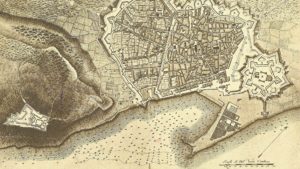
barcelona-history
During this time the Catalonian empire, centered in Barcelona, became increasingly autonomous and enjoyed a period of affluence. The Crown of Aragon was established in 1137, and the empire expanded throughout the Mediterranean as far as Greece. In 1479, Count Fernando married Isabel of Castile, uniting two of the most powerful monarchies in Spain. This marked the beginning of conflict between Madrid and Barcelona for control of the Kingdom of Spain.
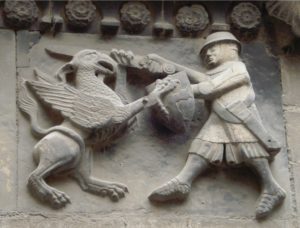
soler_de_vilardell
Catalonia was continuously suppressed by Spanish rulers, coming to a head in the 17th century when Catalonia declared its independence, but was subsequently devastated by Spanish forces. The War of Spanish Succession saw Catalonia battling against the rest of Spain over who was to assume the Spanish Throne. The war ended in 1714 with the Spanish siege of Barcelona, which led to more Catalonian suppression, including the banning of the Catalonian language.
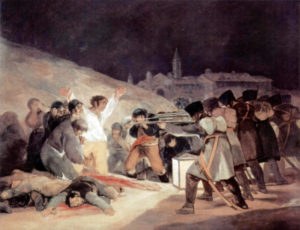
1800’s
In the early 1800s, Catalonia was invaded by Napoleon, who installed his brother Joseph as ruler. After Napoleon was overthrown, the area was returned to Spain. Shortly thereafter, Barcelona enjoyed the benefits of the Industrial Revolution, and its population swelled. During this time, the Eixample, or “expansion,” portion of the city was created. The World’s Fair was held in Barcelona in 1888 in the Parc de la Ciutadella.
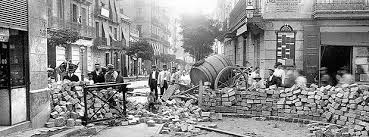
Civil-war-Spain
The early 20th century was again a period of unrest in Barcelona, with different factions, including anarchists, Catalonian nationalists, and Spanish Republicans competing for power. The Spanish Civil War brought about the fall of Barcelona, who sided with the Republican Government, at the hands of Francisco Franco, there was a period of political oppression. Barcelona achieved the state it exists in today with the death of Franco in 1975 and the return of autonomous rule to Catalonia in 1979 under a democratically-elected government.
Food
● For the best food experiences, stay away from the tourist track – food is normally quite expensive and of poor quality where the crowds are. Get lost deliberately and try dining in the quieter side streets.

food-Barcelona
● If you do eat in touristy places, do it for a view not for a quality of food.
● If menu comes laminated with pictures of the dishes, it is probably not very good. Order simple plates that are difficult to mess up, like pizza.
● Keep a close eye on your belongings in crowded areas such as Las Ramblas, and keep your bags in sight while dining.
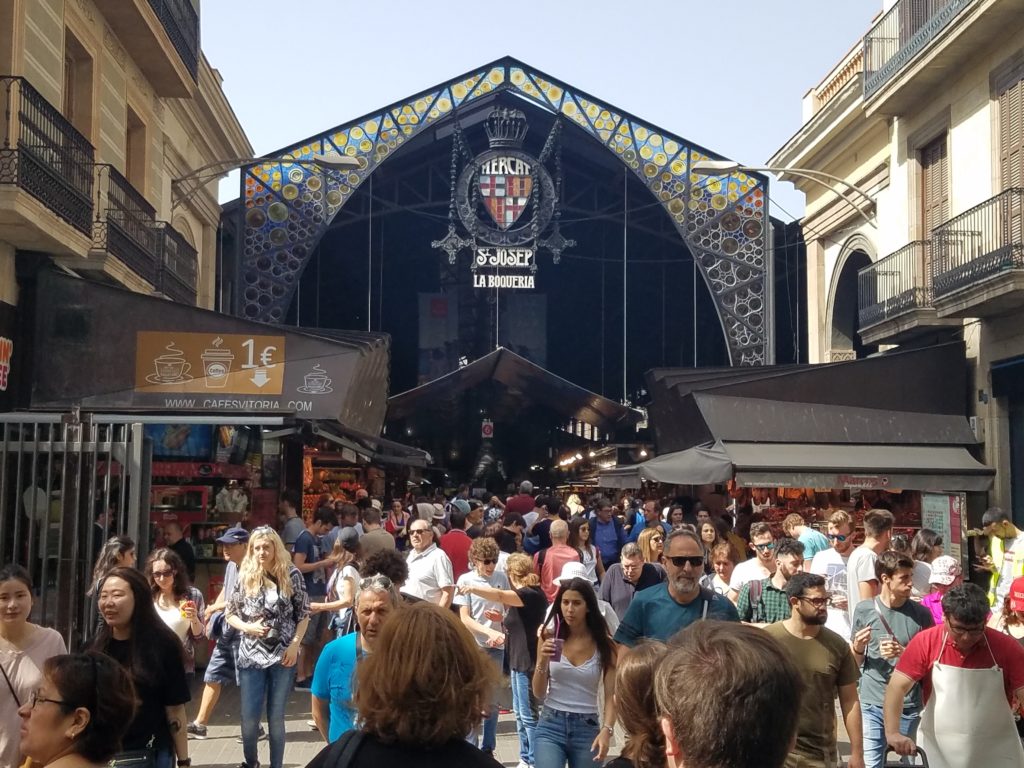
Marcat de la Boqueria
● Pair your meals with Catalan wine – those from Priorat and Penedes are my favorites.
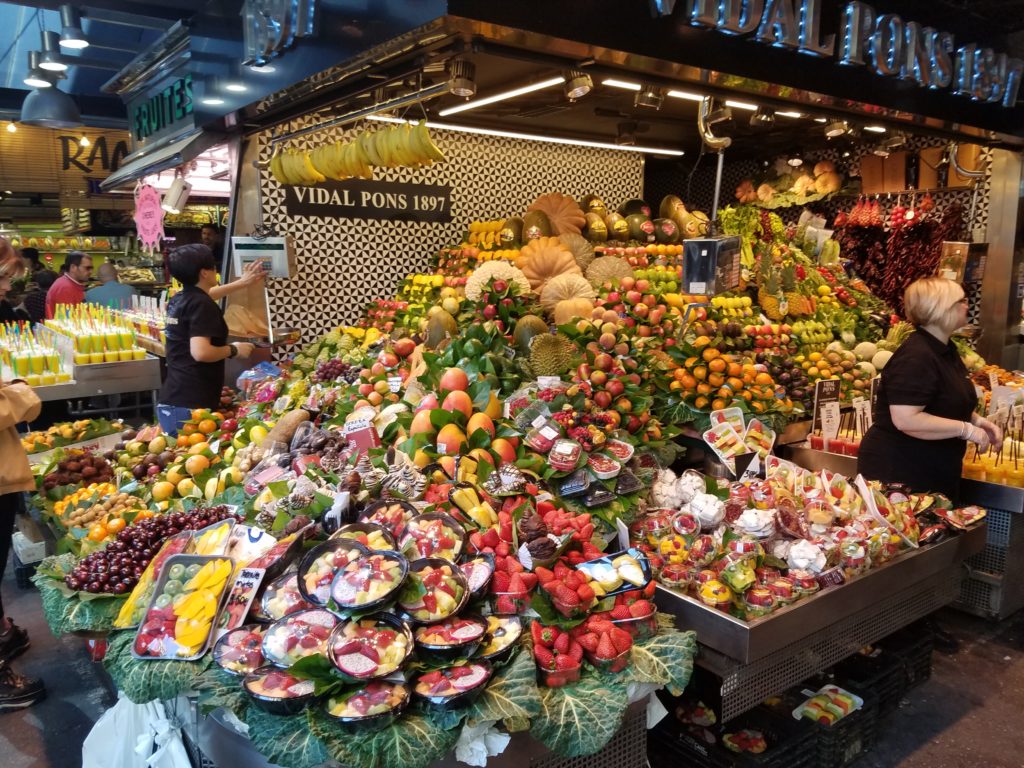
Marcat de la Boqueria
● Make sure you experience Marcat de la Boqueria. It is right on Las Rambles. This market is foodie heaven. From fresh fish to food-to-go, you can find all types of dishes and ingredients here. Although Mercat de Sant Josep de la Boqueria is probably one of the most famous markets in the world, many vendors are still traditional farmers, who still come to the market to sell their outstanding products, just as they’ve been doing for decades. You simply can’t leave Barcelona without visiting it.
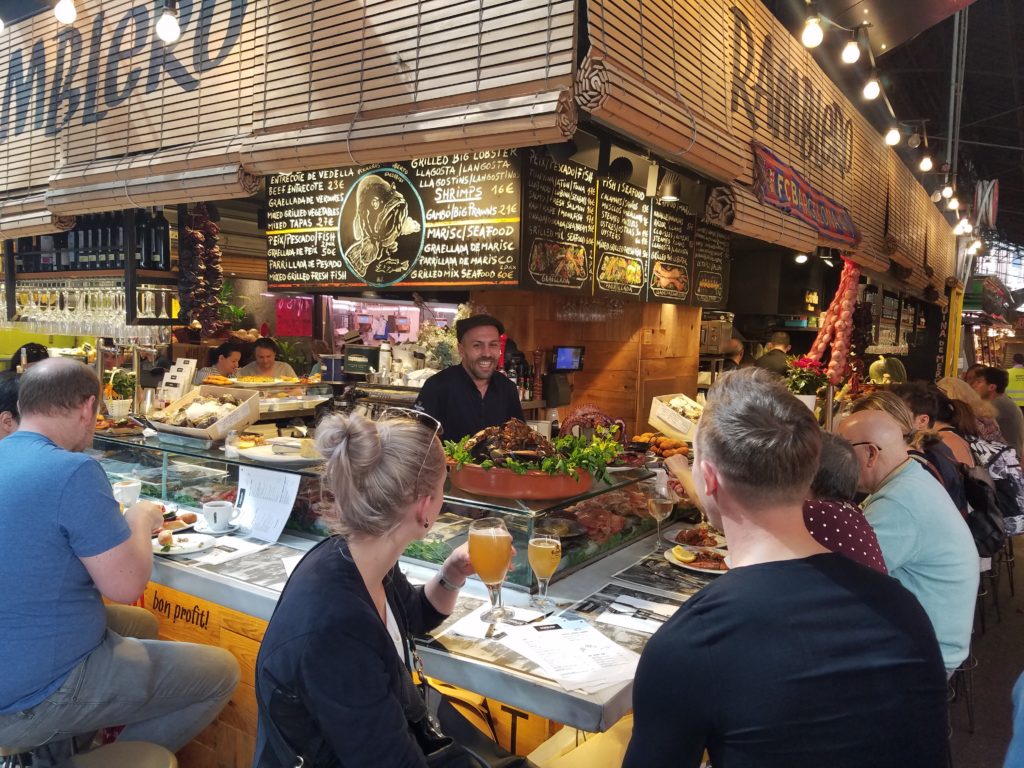
Marcat de la Boqueria
● An alternative to crowded Marcat de la Boqueria is a Mercado de Santa Caterina ( Santa Caterina Market). If you enjoy food market experience, but don’t like the crowds, this is where locals shop and eat. Address is Av. de Francesc Cambó, 16, 08003 Barcelona, Spain and you can reach it while walking from Las Ramblas past the Barri Gòtic toward Parc de la Ciutadela.
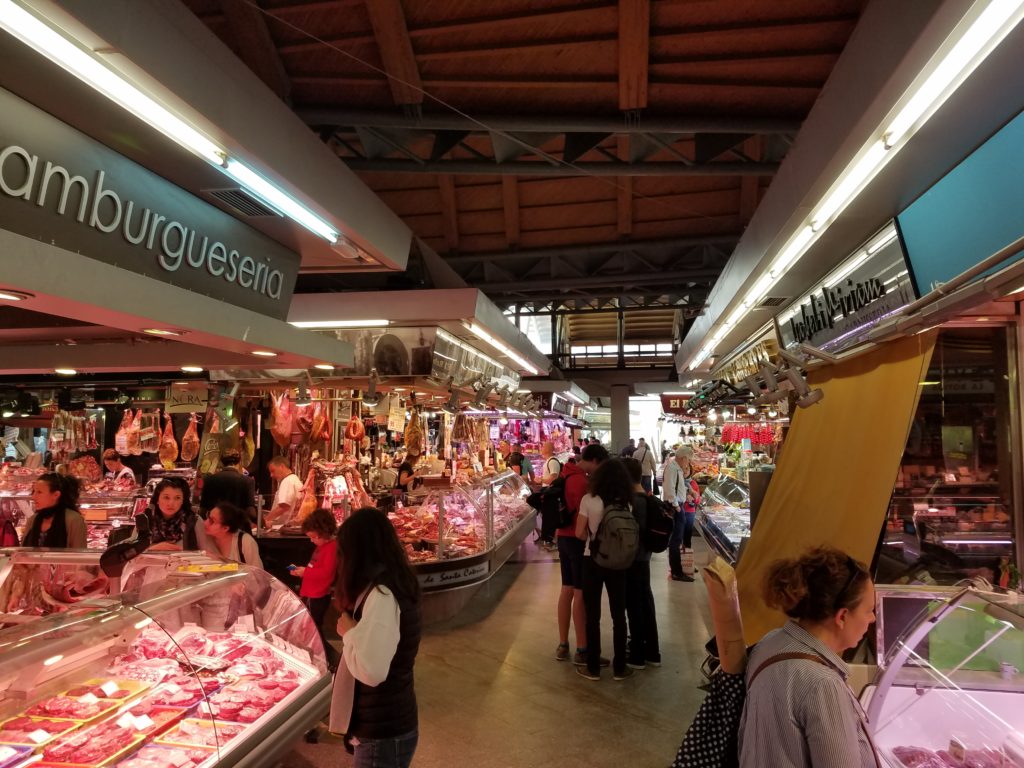
Santa Caterina Market
● For great views of the beaches, consider dining at the Marina near Port Olimpic.
Public Transportation
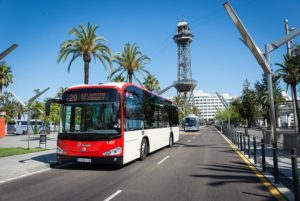
Barcelona-public-transport
Barcelona has an excellent public transportation system. If you will be visiting for more than a day consider getting Barcelona Card. The Barcelona card entitles you to unlimited transport on the metro underground, buses and trams in Barcelona city center. You also receive discounts on entry tickets to many of Barcelona’s main attractions. Avoid the queues to purchase transport tickets and the stress of trying to speak in Spanish.
Where to stay
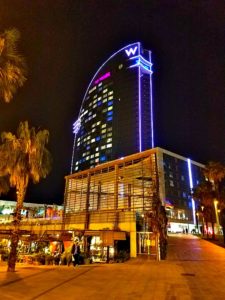
W-Barcelona-at-night
Before dramatic building expansion for the Olympic Games, the place to stay in Barcelona was around Las Ramblas. Today, however, number of new hotels shifted tourism toward city’s beaches and the Olympic Park area. We stayed at W Hotel Barcelona and truly enjoyed it. One thing’s for sure, there are no shortages of hotels and Airbnb options around the city.
What to see and do: Barcelona beyond Gaudi
One can and should spend at least a day enjoying Gaudi’s Barcelona. I devoted a separate article to that. For other sights, I would strongly suggest allocating at least two days. We spend 5 days total in Barcelona, and if you can do it, it was amazing.
Port Vell, Barceloneta and Boardwalk
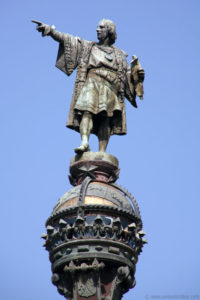
Columbus
Start your exploration of Barcelona with the area around city’s main port and marina. Here stands and iconic statue of Christopher Columbus, on the spot where he was welcomed back by Spanish Monarchs after discovery of the New World.
The Moll d’Espanya (moll meaning “quay, wharf or pier”) has a shopping and restaurant complex, the Maremagnum, plus an IMAX cinema and the largest aquarium in Europe.
As you walk around the port toward the beaches, you will enter Barceloneta area. This used to be city’s fishing village. Facing mega yachts, this is a great place to enjoy a nice drink during a day or night.
Olympic Village
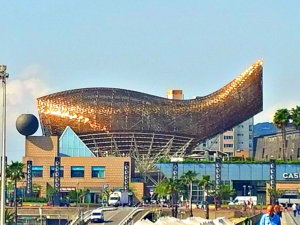
Olympic-Village
Barcelona’s boardwalk is over two miles long and it is a safe place to walk, run or bike along the sea shore. You can rent a bike at many spots along the boardwalk. At the very end lies an Olympic Village which now houses hotels, apartments, offices, restaurants and nightclubs. Here also is city’s other marina offering dining with great views of beaches and Barcelona.
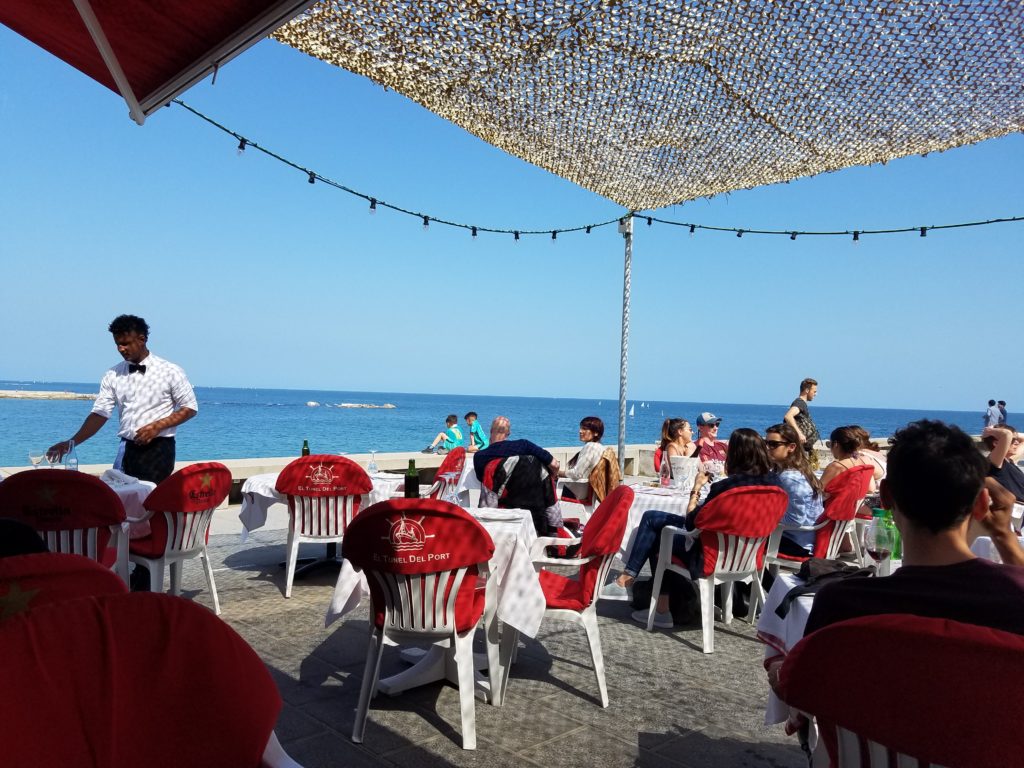
Dining Olympic-Village
Parc de la Ciutadella and Zoo
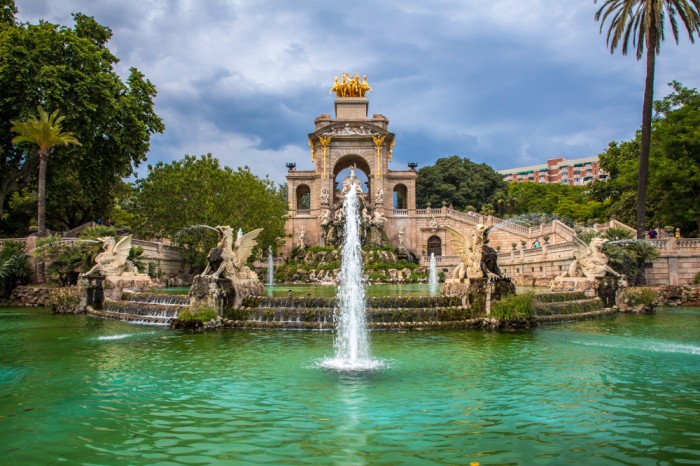
Parc-Ciutadell
From the Olympic Village there is only 15 minutes walk to the Parc de la Ciutadella. The park offers more cultural and leisure activities than any other in the city and is particularly popular on Sunday afternoons, when people gather to play instruments, dance and relax, or visit the museum and zoo. A variety of works by Catalan sculptors such as Marès, Arnau,
Carbonell, Clarà, Llimona, Fuxà, Gargallo and Dunyach can be seen, alongside work by modern artists such as Tàpies and Botero.
Castell dels Tres Dragons
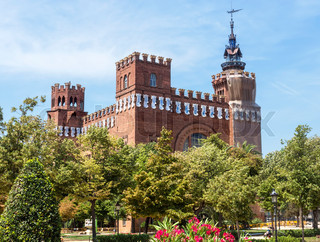
Castell Dels Tres Dragons
At the entrance to the Parc de la Ciutadella is the Castell dels Tres Dragons (Castle of the Three Dragons), named after a play by Frederic Soler.
Arc del Triomf
Main gateway to the park was built in 1888. Visitors can climb to the viewing terrace at the top of the arch.
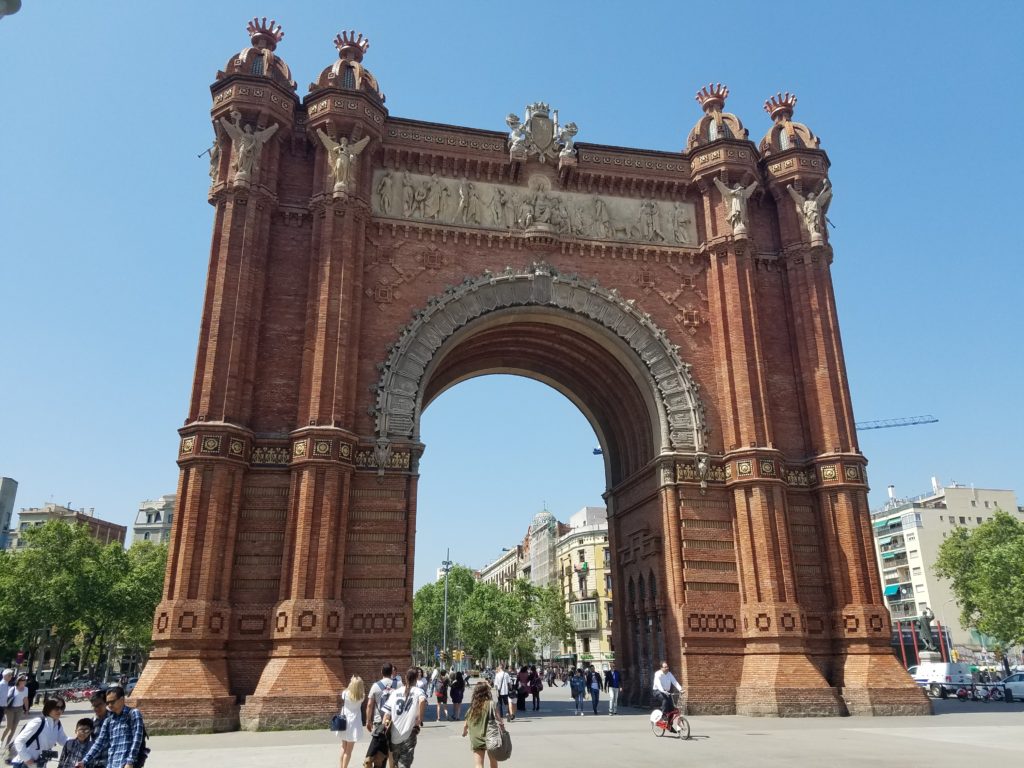
Arc Triompf
EIXAMPLE
Eixample neighborhood is most famous for works of Gaudi and the greatest collection of Art Nouveau buildings of any city in Europe. I devoted separate article on that topic, Gaudi’s Barcelona. Besides its architectural gems, Eixample offers great shopping and fine dining away from typical tourist spots.
Montjuïc
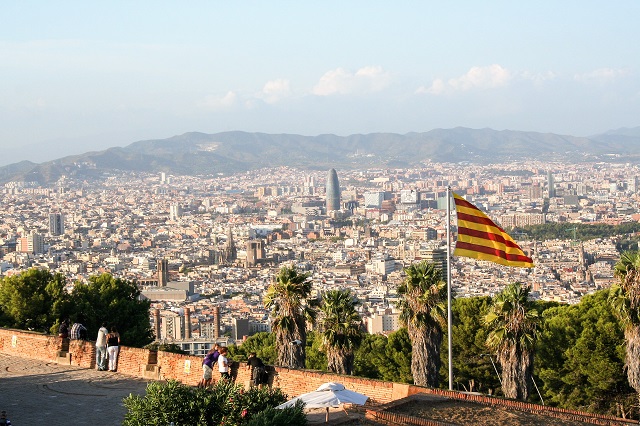
Barcelona view from Monotjuic hill
Visiting Montjuic neighborhood will most likely require using some kind of public transportation or a taxi. Once you get there make sure you take in breathtaking views of the city. There are 2 cable car lines running to the Castle Montjuic which are great and fun options to see the city.
Barcelona’s Port Cable Car
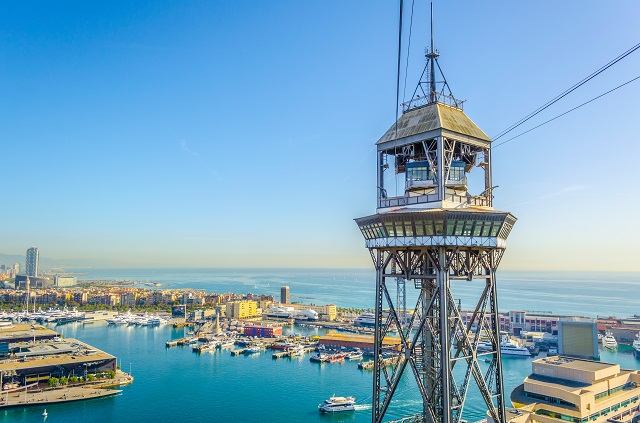
View of the cable car connecting barceloneta beach and montjuic hill in Barcelona, Spain
Built in 1931, this cable car system is located in Barceloneta. The journey lasts around ten minutes and it’s the fastest way to get to the mountain from
Barceloneta Beach. The view of the seaport and Barceloneta from 70 meters high is priceless.
Cable Car (the fun one!)
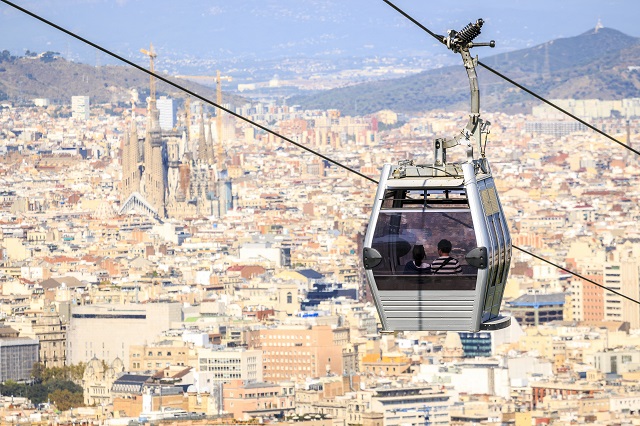
Cable car between coast and Montjuic hill, Barcelona, Spain
Right next to the funicular Station, lies the Montjuic’s Cable Car. This ride takes you directly to the castle of Montjuic with photogenic views of Barcelona.
Castell de Montjuïc
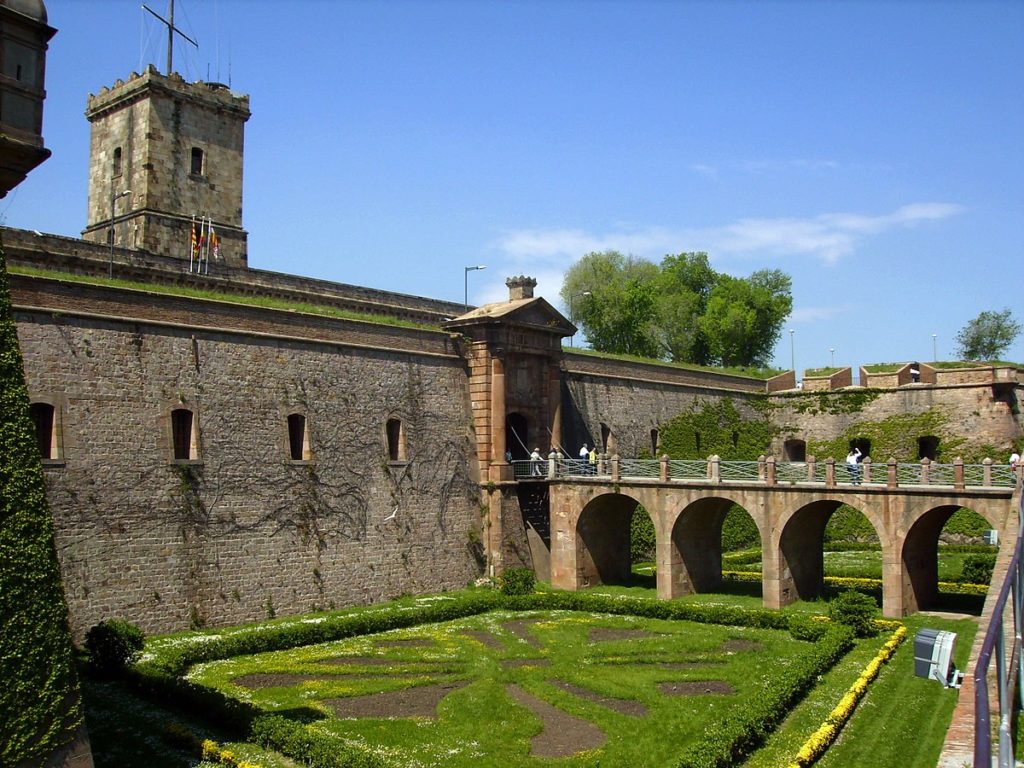
Castell_de_Montjuic
The summit of Montjuïc is occupied by an 18th-century castle, first built in 1640 but destroyed by Felipe V in 1705. The present fortress was built for the Bourbon family. During the War of Independence the castle was captured by the French, and after the Civil War it became a prison, where the Catalan leader Lluís Companys was executed in 1940. It is now a peace museum, with further exhibits on the castle’s history.
Museu Nacional d’Art de Catalunya
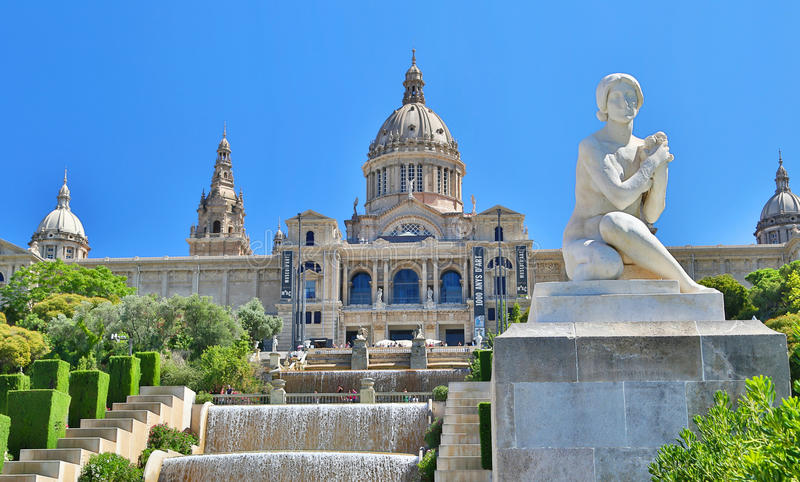
national-museum-catalan-art
Displayed in the National Palace, the main building of the 1929 International Exhibition is Europe’s finest collection of early medieval frescoes.
Poble Espanyol Spanish Village
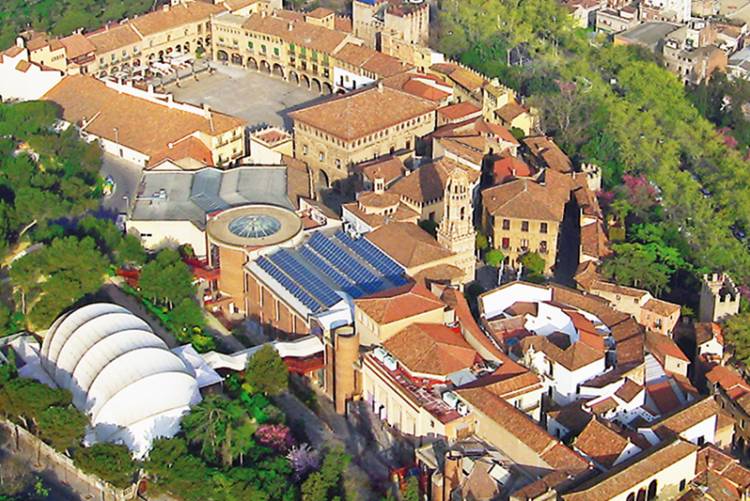
Poble-Espanyol
Poble Espanyol is actually an open air museum in form of a Spanish village and is located at the foot of Montjuic hill. Spread over about 50,000 m² meters, it’s a place where tourists can enjoy and experience an entire range of Spanish culture. The Poble Espanyol houses replicas of characteristic houses from different regions of Spain including Aragon, Catalonia, Castile, Andalusian, the Basque Country and Extremadura. These buildings are often shops and workshops of craftsmen who display their skills. In the Andalusian quarter the glass blowers show their skills to the visitors.
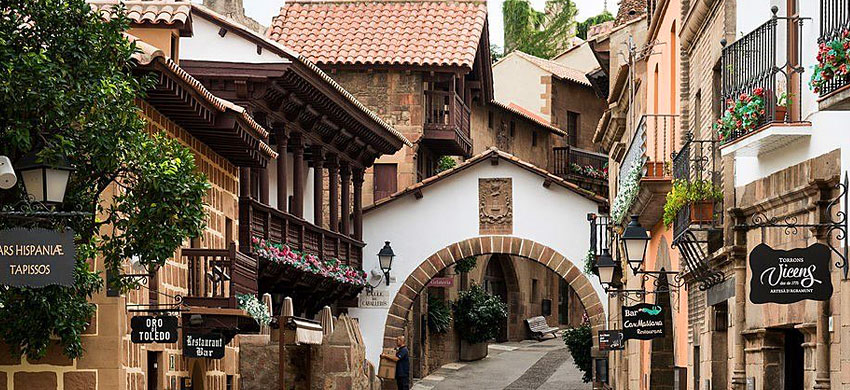
Poble-Espanyol
Souvenirs can be bought from the shops and there are restaurants to provide solution for hunger as tourists roam around the place. It is a fun place for kids and adults alike, especially if they are only visiting Barcelona and want to get a taste of rest of Spain.
Camp Nou
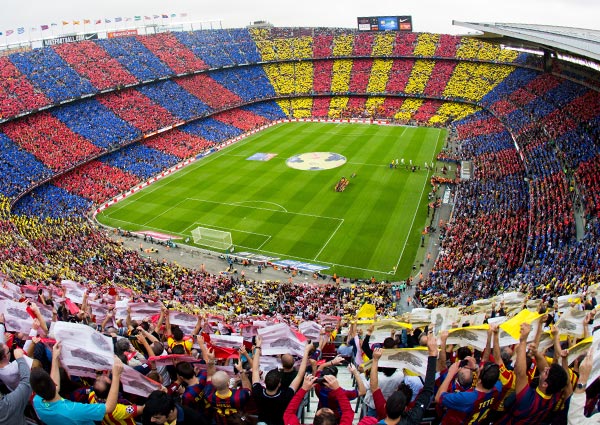
Camp-Nou
When visiting Barcelona, don’t forget to see it’s famous Barcelona Football Stadium The Barcelona football stadium is the 3rd largest football stadium in the World after the stadiums in Sao Paulo, Brazil and Mexico City. Barcelona Camp Nou has a capacity of 110,000 people and on every match practically every seat is taken -such is the passion for football shared by the Catalan people.
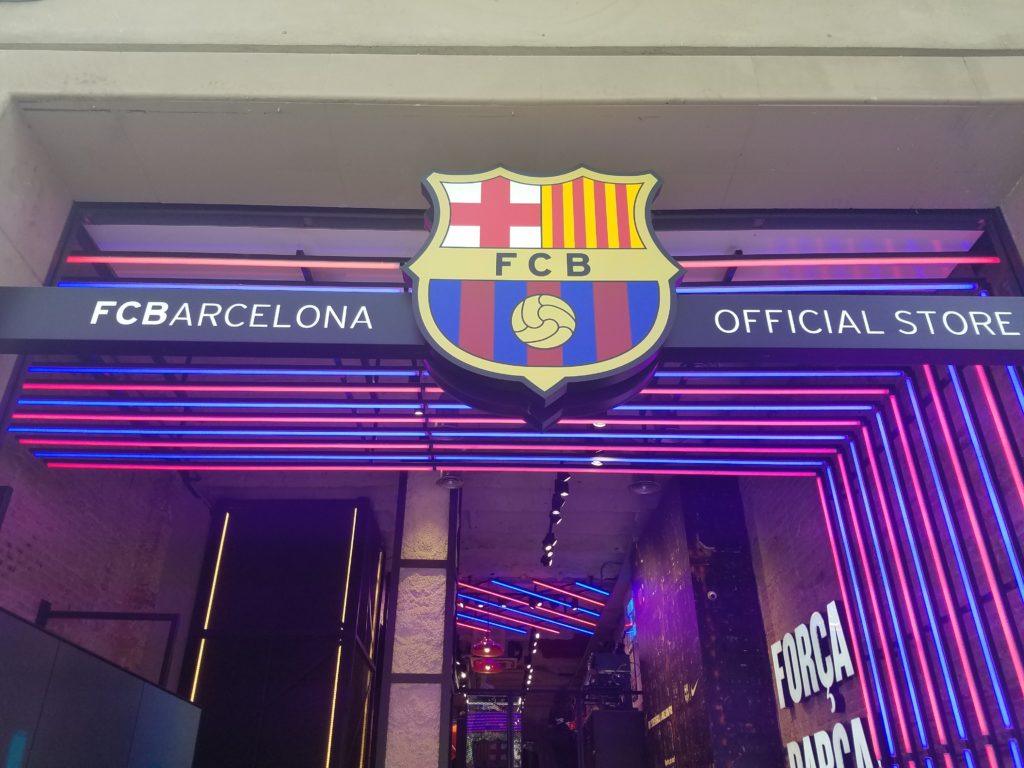
FC-Barcelona-Store
Not enough time. Stop by one of the dozens stores run by FC Barcelona throughout the city.
Heart of Barcelona: Las Ramblas and Barri Gòtic
Las Ramblas
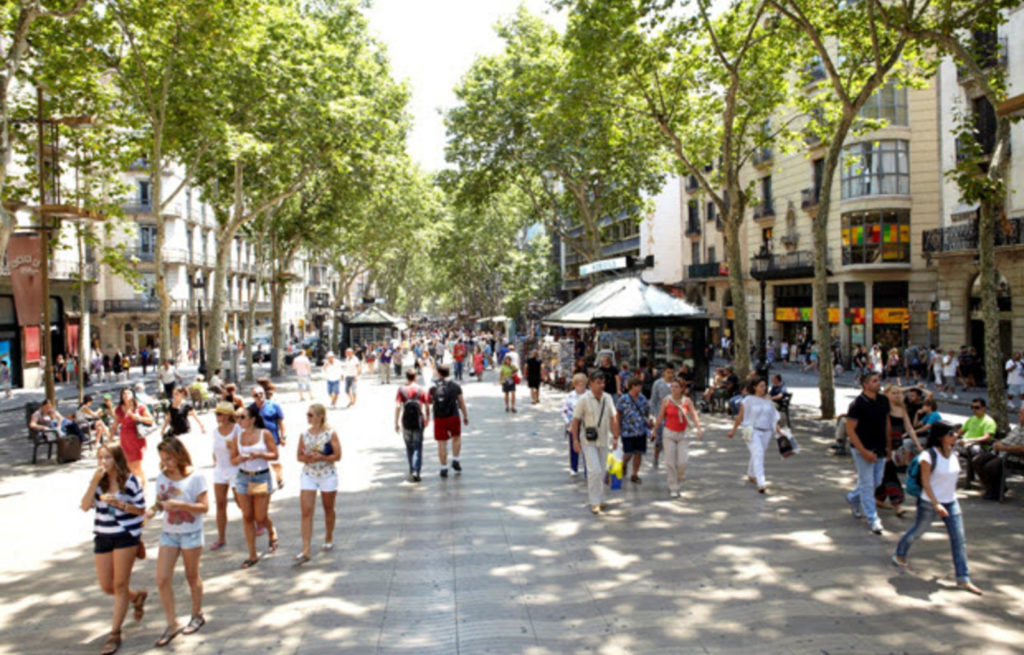
Las_Ramblas
Anytime of the day, las Ramblas is bustling with life. It is probably the most famous street in Barcelona. Newsstands, caged bird and flower stalls, tarot readers, musicians and mime artists throng the wide, tree shaded central walkway. Among its famous buildings are the Liceu Opera House, the huge Boqueria food market and some grand mansions. The name of this long avenue, also known as Les Rambles, comes from the Arabic ramla, meaning “the dried-up bed of a seasonal river”.
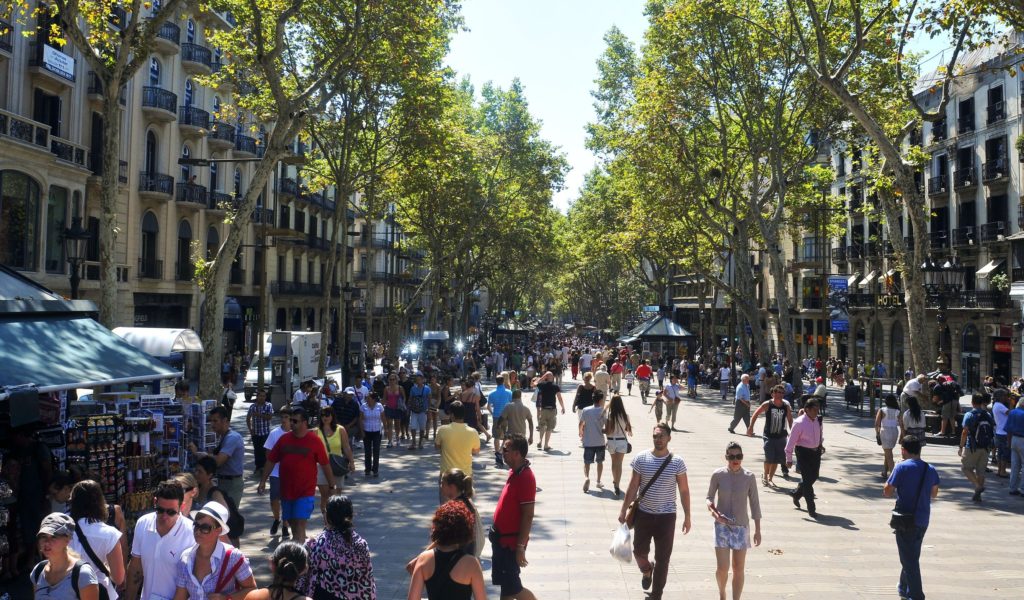
La-Rambla-Barcelona
The 13th-century city wall followed the left bank of such a river that flowed from the Collserola hills to the sea. Convents, monasteries and the university were built on the other bank in the 16th century. As time passed, the riverbed was filled in and those buildings demolished, but they are remembered in the names of the five consecutive Rambles that make up the great avenue between the Port Vell and Plaça de Catalunya.
Palau de la Música Catalana
This is a real palace of music, a Modernista celebration of tilework, sculpture and glorious stained glass. It is the only concert hall in Europe lit by natural light.
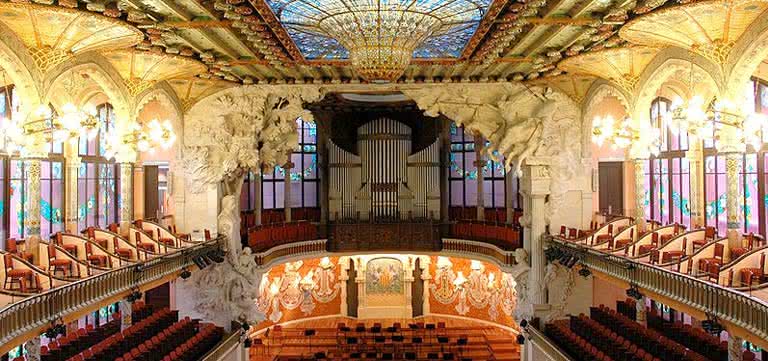
Palau-de-la-Musica-Catalana
Museu Picasso
One of Barcelona’s most popular attractions, the Picasso Museum is housed in five adjoining medieval palaces on Carrer Montcada: Berenguer d’Aguilar, Baró de Castellet, Meca, Mauri and Finestres. It opened in 1963 showing works donated by Jaime Sabartes, a friend of Picasso. Following Sabartes’ death in 1968, Picasso himself donated paintings, including early examples. These were complemented by graphic works, left in his will, and 141 ceramic pieces given by his widow, Jacqueline.

Museum-Picasso
The strength of the 4,200piece collection is Picasso’s early works. These show how, even at the ages of 15 and 16, he was painting major works, such as The First Communion (1896) and Science and Charity (1897). The most famous work is his series of 44 paintings, Las Meninas, which was inspired by Velázquez’s masterpiece.

Marcat de la Boqueria
Make sure you experience Marcat de la Boqueria. It is right on Las Ramblas. This market is foodie heaven. From fresh fish to food-to-go, you can find all types of dishes and ingredients here. Although Mercat de Sant Josep de la Boqueria is probably one of the most famous markets in the world, many vendors are still traditional farmers, who still come to the market to sell their outstanding products, just as they’ve been doing for decades. You simply can’t leave Barcelona without visiting it.
Barri Gòtic
The Barri Gòtic (Gothic Quarter) is the true heart of Barcelona. The oldest part of the city, it was the site chosen by the Romans in the reign of Augustus (27 BC–AD 14) on which to found a new colonial (town), and has been the location of the city’s administrative buildings ever since.
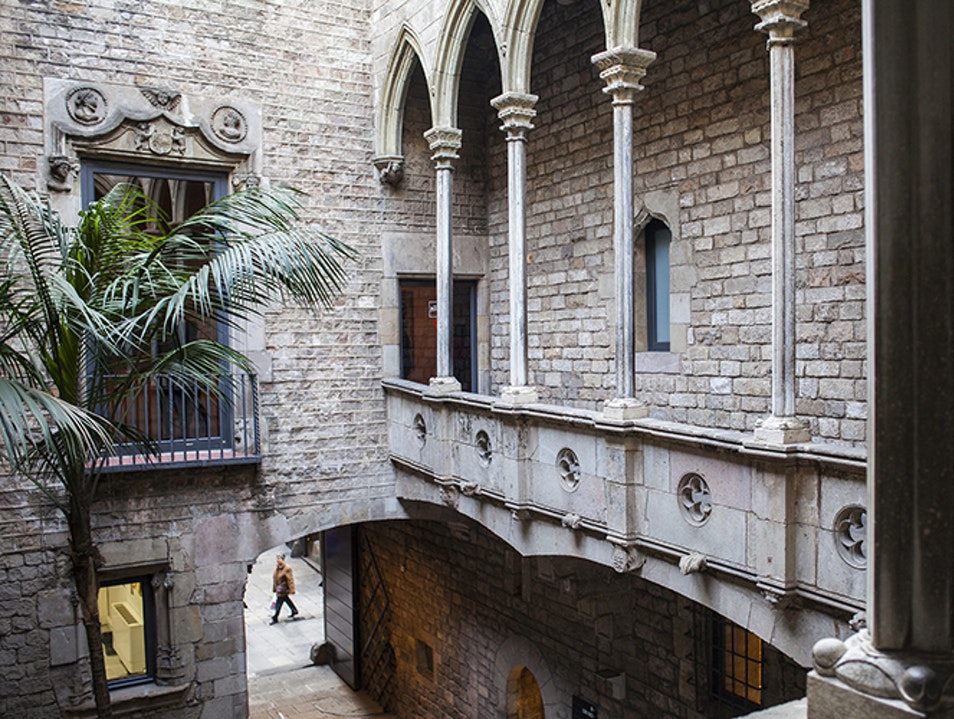
Barri-Gotic (Picasso-Museum)
The Roman forum was on the Plaça de Sant Jaume, where now stand the medieval Palau de la Generalitat, Catalonia’s parliament, and the Casa de la Ciutat, Barcelona’s town hall. Close by are the Gothic cathedral and royal palace, where Columbus was received by Fernando and Isabel on his return from his voyage to the New World in 1492.
Palau de la Generalitat
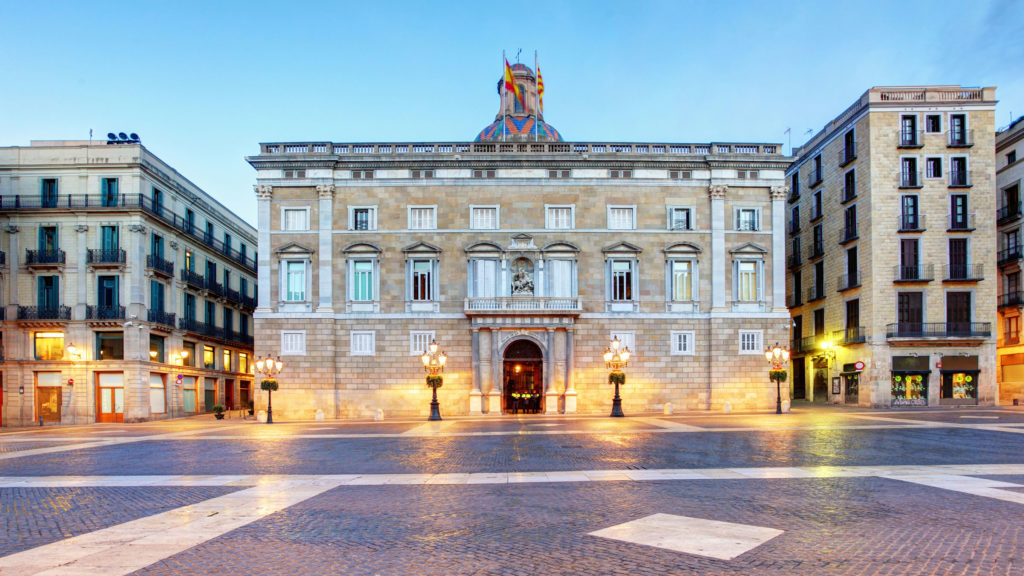
palau-de-la-generalitat
The seat of Catalonia’s governor has superb Gothic features, which include the chapel and a stone staircase rising to an open-air, arcaded gallery.
Barcelona Cathedral
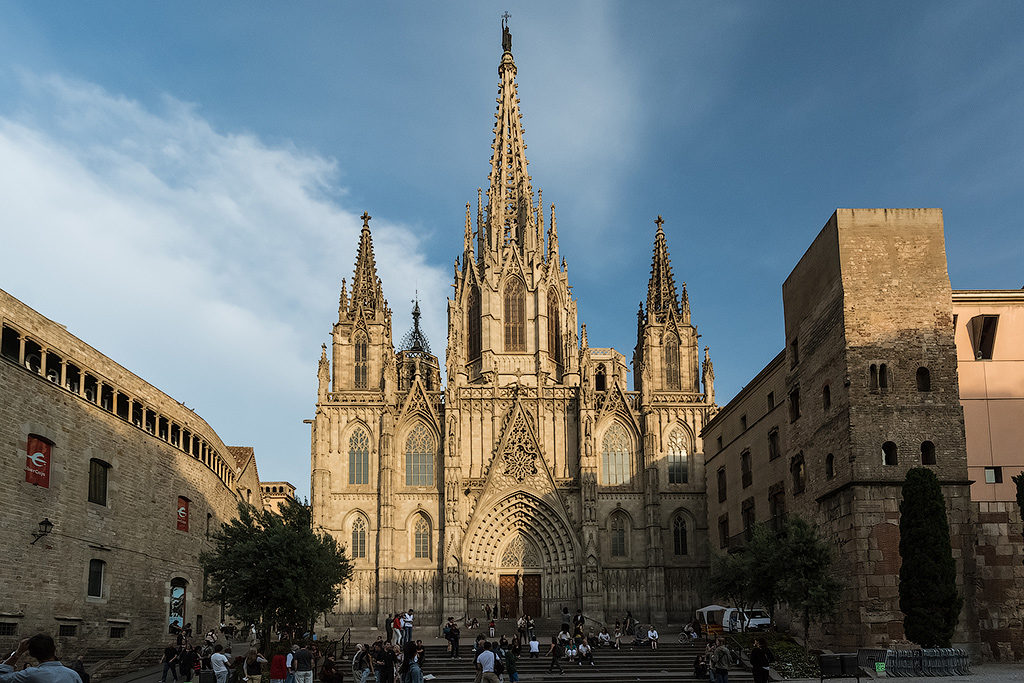
BARCELONA-Cathedral
This compact Gothic cathedral, with a Romanesque chapel (Capella de Santa Llúcia) and beautiful cloister, was begun in 1298 under Jaime (Jaume) II, on the foundations of a site dating back to Visigothic times. It was not finished until the late 19th century, when the main façade was completed. A white marble choir screen, sculpted in the 16th century, depicts the martyrdom of St Eulàlia, the city’s patron. Next to the font, a plaque records the baptism of six Caribbean Indians, whom Columbus brought back from the Americas in 1493.
Crypt
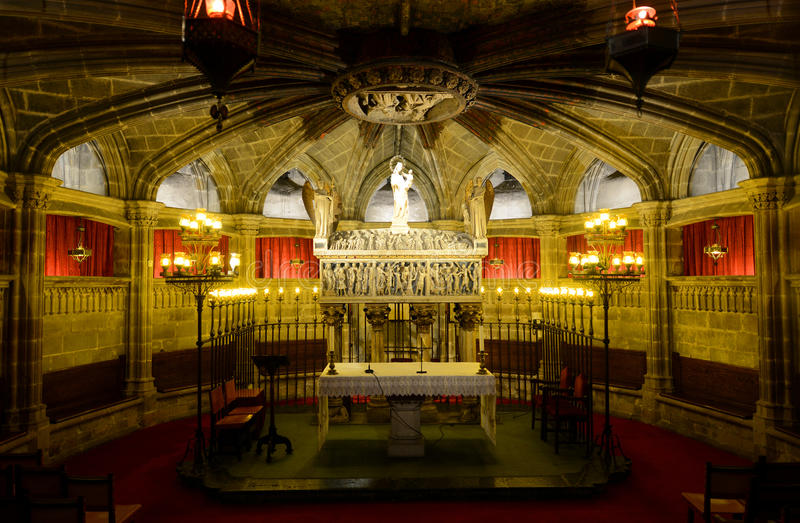
saint-eulalia
In the crypt, beneath the main altar, is the alabaster sarcophagus (1339) of St Eulàlia, martyred for her beliefs by the Romans during the 4th century AD.

Barcelona-Cheers
As you can see, Barcelona offer great variety of sightseeing and entertainment, making it the most visited city in Spain. Hope you enjoyed this amazing city with us and find this article useful in creating your own perfect visit to Barcelona, Spain.
If you like our posts and travels, please spread the word about PointsTravels.com and follow us on Instagram and Facebook.

